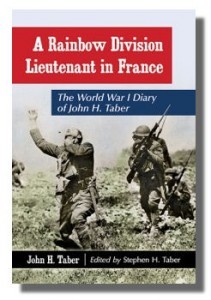Nick Metcalfe's Blog, page 9
June 29, 2016
The Somme – Thomas Bunting, killed in action on 1 July 1916
Like many families from Ireland we had relatives who took part in the attack on 1 July 1916. Luckily, my great-grandfather Sergeant William Neill, the Transport Sergeant of the 9th Royal Irish Fusiliers, did not ‘go over the top’ that morning and survived the attack. Less fortunate was his nephew—my first cousin, twice removed—Lance Corporal Thomas Bunting. He was serving in 8 Platoon, ‘B’ Company, 9th Royal Irish Rifles in 107th Brigade and was reported as wounded and missing in that battalion’s follow-up to the main attack by 36th (Ulster) Division. He was 19 years old.
His family did not know his fate for many months. About a month after he was declared missing his father wrote to the Red Cross hoping that he was a prisoner of war. On 25 August 1916 the Red Cross replied—there was no record of him. Sometime in mid-1917 Thomas Bunting’s family were informed that his death was presumed to have occurred on or after 1/2 July 1916. He has no known grave and is commemorated on the Thiepval Memorial. He is also commemorated on the memorial at Dollingstown in County Down.
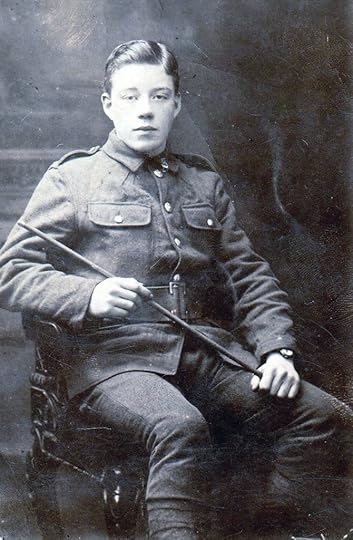
Lance Corporal Thomas Bunting, 8 Platoon, ‘B’ Company, 9th (Service) Battalion, The Royal Irish Rifles (West Belfast), killed in action 1 July 1916. Commemorated on the Thiepval Memorial.
Read more about my family in the First World War.
June 21, 2016
BBC – Voices 16
The BBC’s Voices 16 tells ‘the story of a tumultuous year in the history of Ireland through the eyes of the people who lived it‘. I am very pleased that this super BBC project now includes excerpts from my project Blacker’s Letters.
May 31, 2016
Blacker’s Letters – May 1916
The letters written by Lieutenant Colonel Blacker in May 1916 have now been published and you can read them all on the project’s website. The 9th Royal Irish Fusiliers is just about to move out of the line with the other battalions of 108th and 109th Brigades, 36th (Ulster) Division, to train and prepare for the forthcoming attack. The letters that will follow in June are hopeful of success…
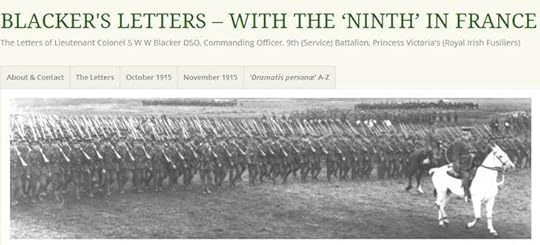
Blacker’s Letters
May 27, 2016
Memorial Day 2016

The graves of Sapper William Bustin and Edwin Jones, in North Burial Ground, Providence
On Memorial Day weekend, I have no better image to share than this one. The Commonwealth War Graves Commission headstone of an Englishman, living in Providence, Rhode Island who volunteered to serve with the Canadian Expeditionary Force. Sapper William Bustin died in Canada during the influenza pandemic and his remains were returned to Rhode Island for burial. The gravestone has been decorated by the cemetery staff in preparation for Memorial Day; the flag is held in a Rhode Island ‘World War Veterans’ flag holder. Beside him lies Edwin Jones, an Englishman born, a naturalised citizen of the United States, and a long-serving member of the Boston Police Department. He volunteered to serve early in the war with the British Army and was gassed in France. Discharged unfit for further service in 1918, he returned home and died less than three months later, aged 54. He is not commemorated by the Commonwealth War Graves Commission and I will tackle that in the coming months. Two of Jones’ sons served: Markham F. Jones with the American Expeditionary Force in France, and Edwin H. Jones with the United States Navy.
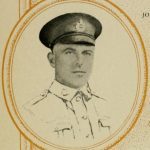
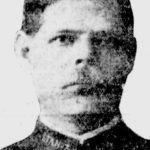
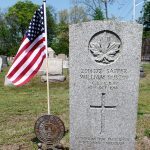
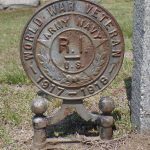
May 1, 2016
Blacker’s Letters – April 1916
The letters written by Lieutenant Colonel Blacker in April 1916 have now been published. The Battalion is now established in the line at Hamel engaged in the routine of trench life. This month’s letters also reveal some of Blacker’s thoughts on the Easter Rising.
The letters from April can be found by clicking on the linked image below:

Sergeant William Neill DCM
February 1, 2016
Blacker’s Letters – January 1916
The letters written by Lieutenant Colonel Blacker throughout January 1916 have now been published. This was the last month before the Battalion entered the line at Hamel, north of the River Ancre, where it would remain until after the attack on the first day of the Battle of the Somme.
The letters from January can be found by clicking on the linked image below:

Blacker’s Letters
December 18, 2015
‘A Stranger in a Strange Land‘
This quote is taken from a report by the Seamen’s Institute about their cemetery plot in The Evergreens Cemetery, Brooklyn. Buried there are nine men commemorated by the Commonwealth War Graves Commission. There are four other casualties of the First World War buried elsewhere in that cemetery. All of their stories are now complete and you can read them by following the links on this piece about the cemetery that appears on The Sacrifice Blog. ‘A Stranger in a Strange Land‘
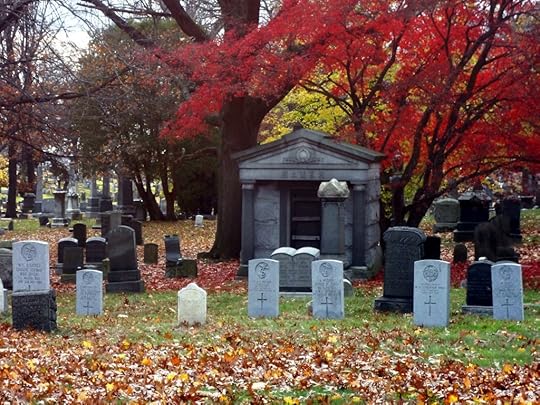
The Seamen’s Church Institute Plot, The Evergreens Cemetery, Brooklyn
December 1, 2015
Blacker’s Letters – November 1915
The letters written by Lieutenant Colonel S W W Blacker in November 1915 have now been published; you can read them all in chronological order at the link below. The A-Z of personalities has been amended to include those who will appear in December’s letters.

Blacker’s Letters
November 29, 2015
Remembrance Day 2015 – Laurel Grove South Cemetery, Savannah
I’m very pleased that a member of the Canadian contingent at Fort Gordon, Georgia, discovered the the story about Private James Stewart on the Sacrifice project. On 11 November 2015 they conducted an act of remembrance at his grave.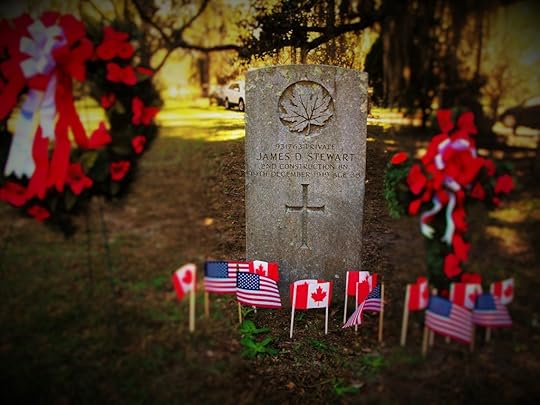
Corporal Allan Gudlaugson organised the event and I must say thank you to Marie-Carole Gallien for telling me about the event and for her super photos.
October 31, 2015
A Rainbow Division Lieutenant in France
Stephen Taber, a contact made through the Western Front Association – East Coast Branch in the United States, has written this latest guest post about the diary of his second cousin, who served with the United States 42nd Division—The Rainbow Division. The edited diary has just been published by McFarland.
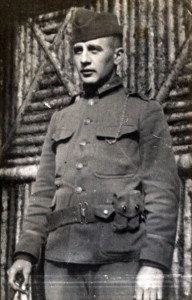
Second Lieutenant Christopher Timothy, Company K, 3rd Battalion, 168th Infantry. He died of wounds on July 28, 1918 having been hit by machine gun fire near the River Ourcq. He is buried in Aisne-Marne American Cemetery, Belleau, France.
The ‘Rainbow’ Division, the 42nd, secured its name from a comment made by its future chief of staff—then Major Douglas MacArthur—that because of its composition of elements of National Guard units from 26 states it “would stretch over the whole country like a rainbow“.
One of the Division’s junior officer was Lieutenant John Taber, my second cousin. He had published a two-volume history of his regiment, the 168th (Iowa), in 1925 but he had related only a few accounts of his personal war experience to me before he died. One was that he could still smell over three hundred dead horses. Another was nearly bumping into President Wilson in a revolving door in Paris.
John passed away in 1986 at the age of 91 and left me his hand written diary of the Great War. After a very long time I finally read his story and decided to edit it and see if it could be published.
In the diary John Taber recounted his journey to France:
“On November 18th our convoy formed up, consisted of the Celtic, Cedric, Aurania, a number of freighters, and an armed British cruiser, and steamed out about noon. As we neared two British Men-of-War, the crews, which were dressed up along the rail, gave three cheers for the American Army and a band on one of them broke out with the ‘Star Spangled Banner’. It made the thrills run up and down my back as we passed slowly by, all-standing at attention. It was an impressive send off, and we thought it mighty fine of them. It makes me think we really have something in common with the English. As we got further out the band changed its tune, and we heard the faint strains of ‘Over There’. And that’s where we’re headed for at last. We all stayed out on deck to catch the last (perhaps really the last) glimpse of America, and now we’re all settled down for a comfortable voyage.”
After describing the voyage across the Atlantic, he goes on to relate his experiences in officer school in France, in the trenches, in open combat in the latter stages of the war, and, finally, in Germany with Third Army; he describes some harrowing experiences. There are also fascinating tales of champagne dinners, interesting billets, and leaves to Paris and the Riviera.
It was an honor and a great pleasure to bring John Taber’s story to light.
John H. Taber graduated from Columbia University in 1917 and was commissioned as a second lieutenant in the 168th Infantry (Iowa) of the 42nd ‘Rainbow’ Division in World War I. In 1925 he wrote ‘The Story of the 168th Infantry‘ in two volumes, published by the State historical Society of Iowa. He died in New York City in 1986.
Stephen H. Taber (Editor), the second cousin of John H. Taber, is a financial specialist on Brazil. He lives in Boston, Massachusetts.


